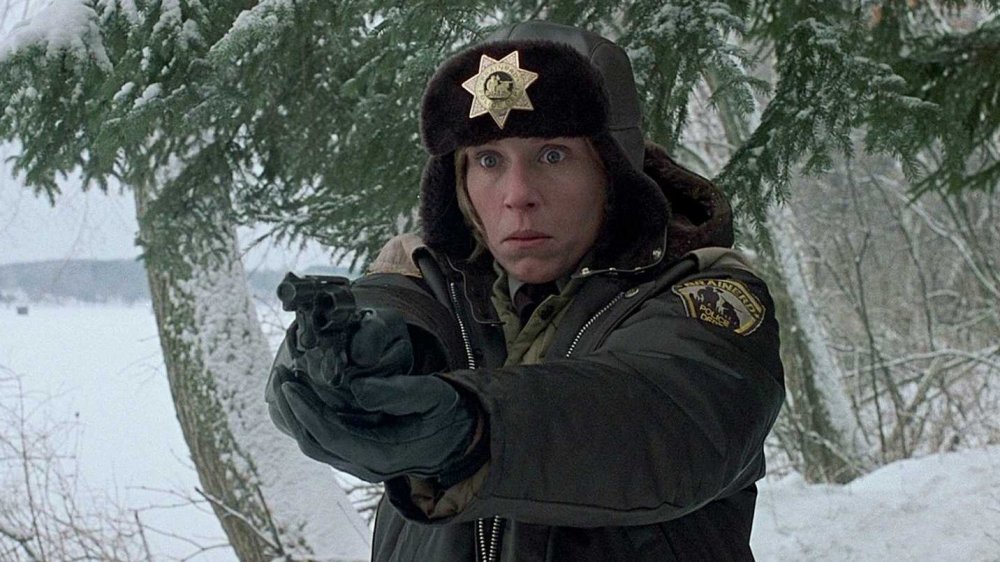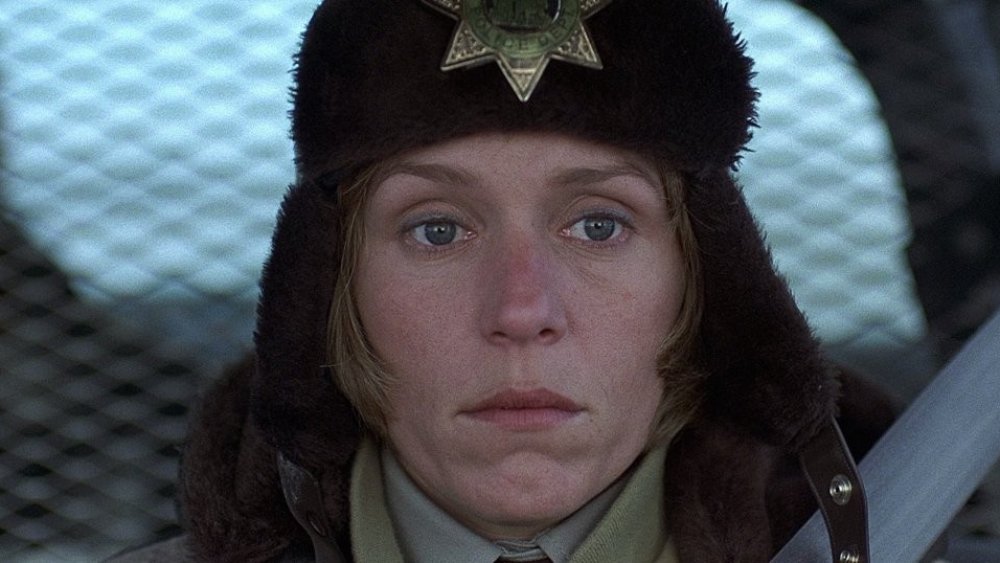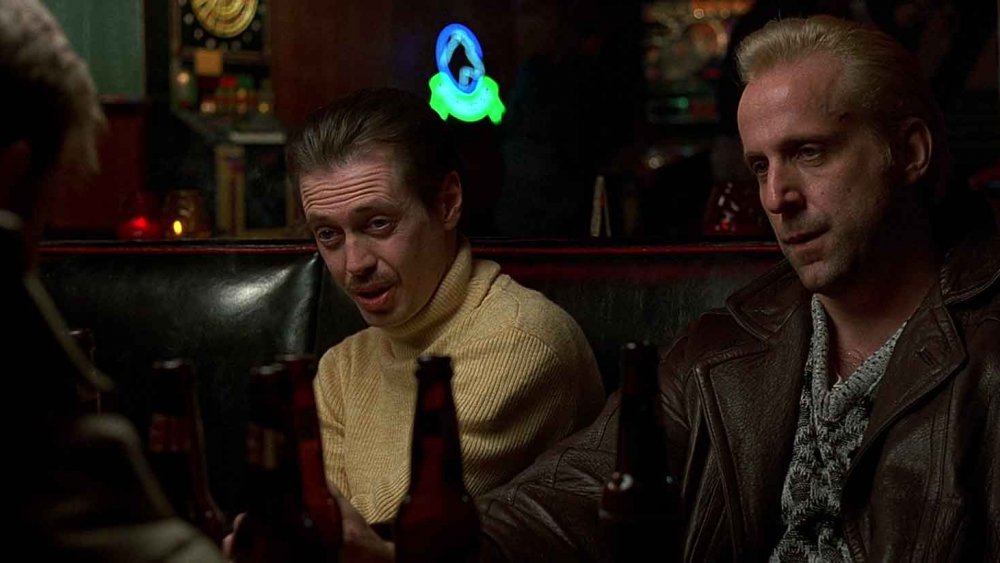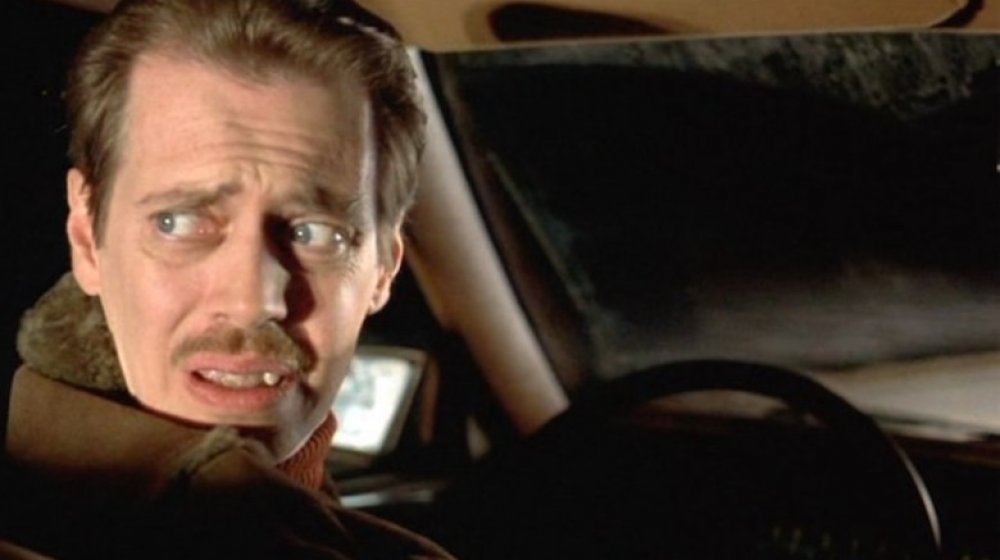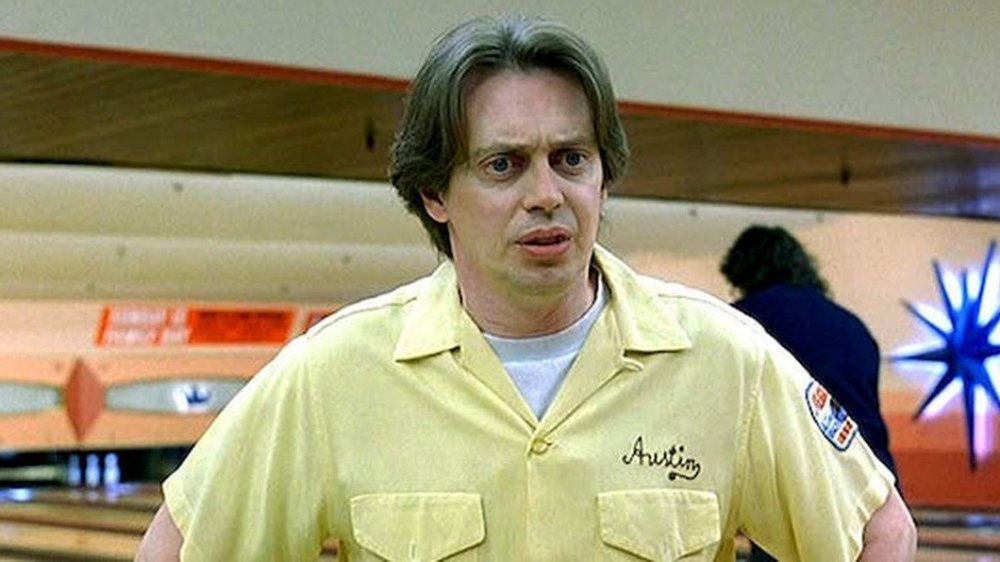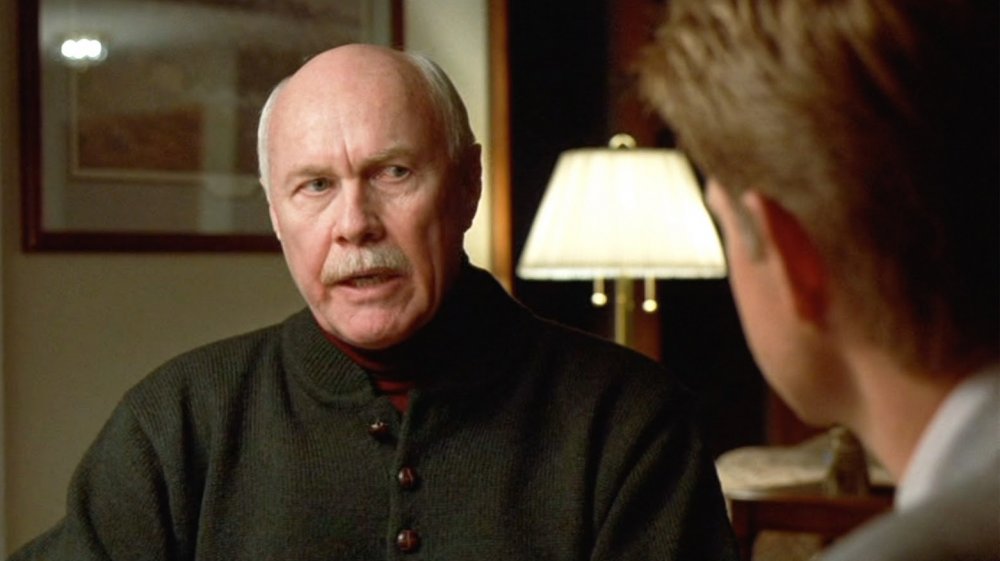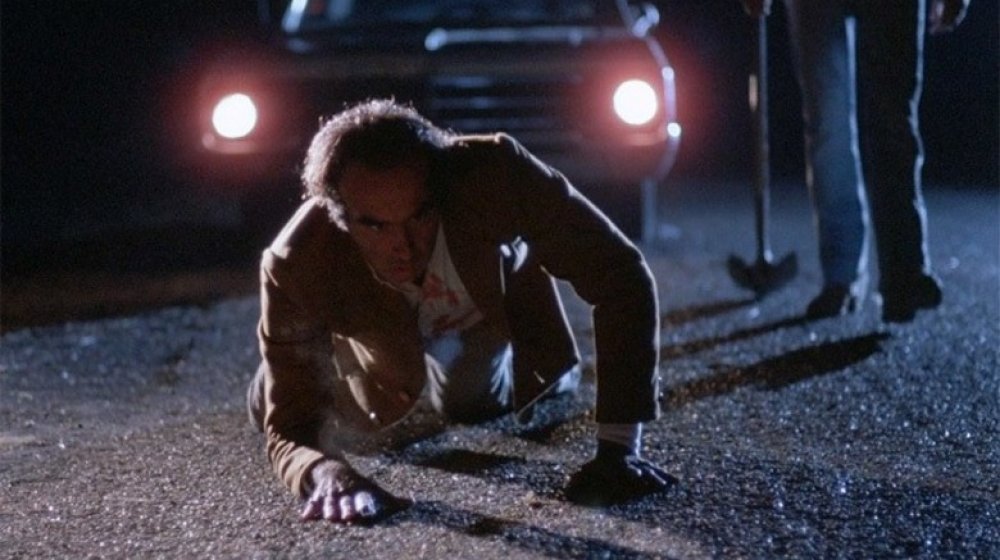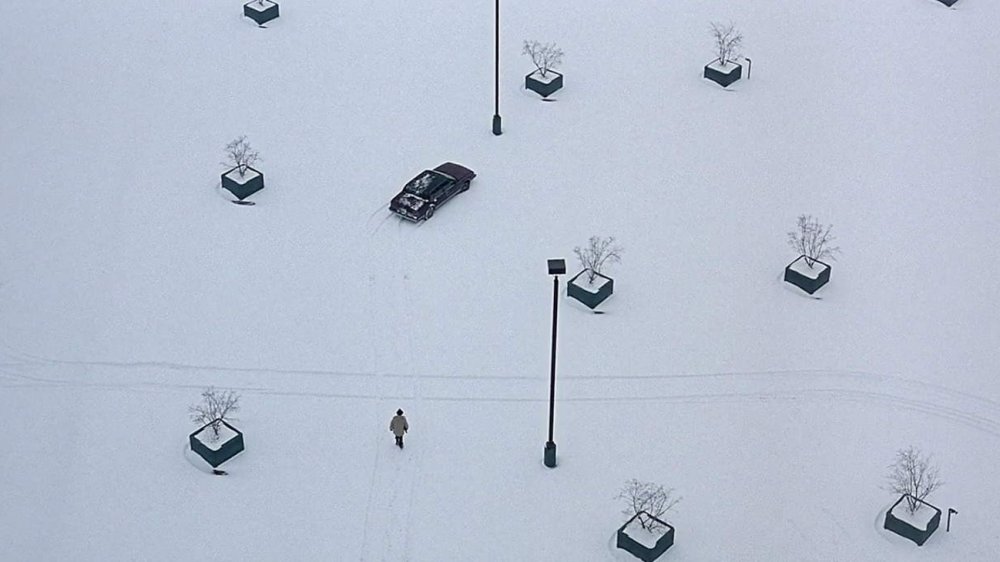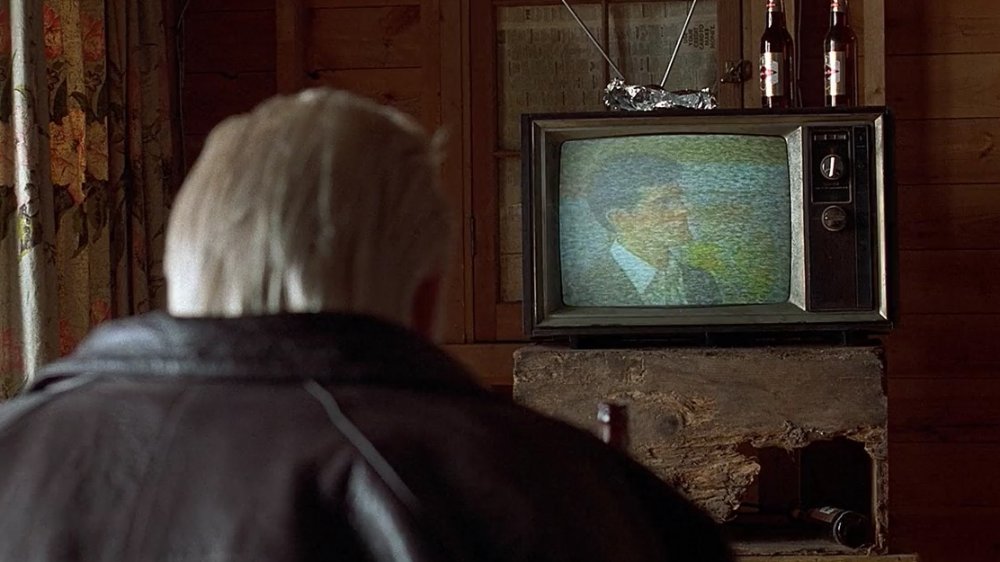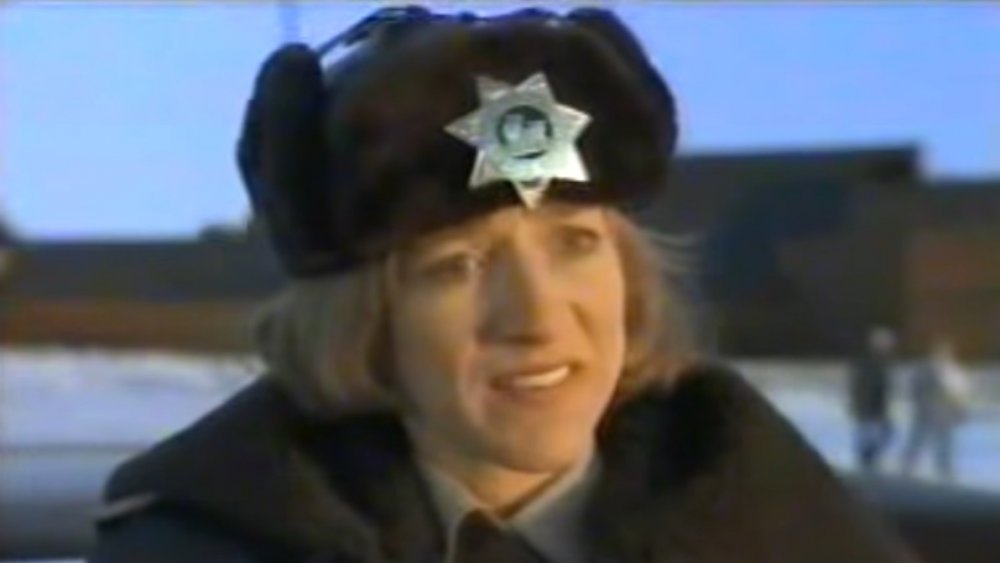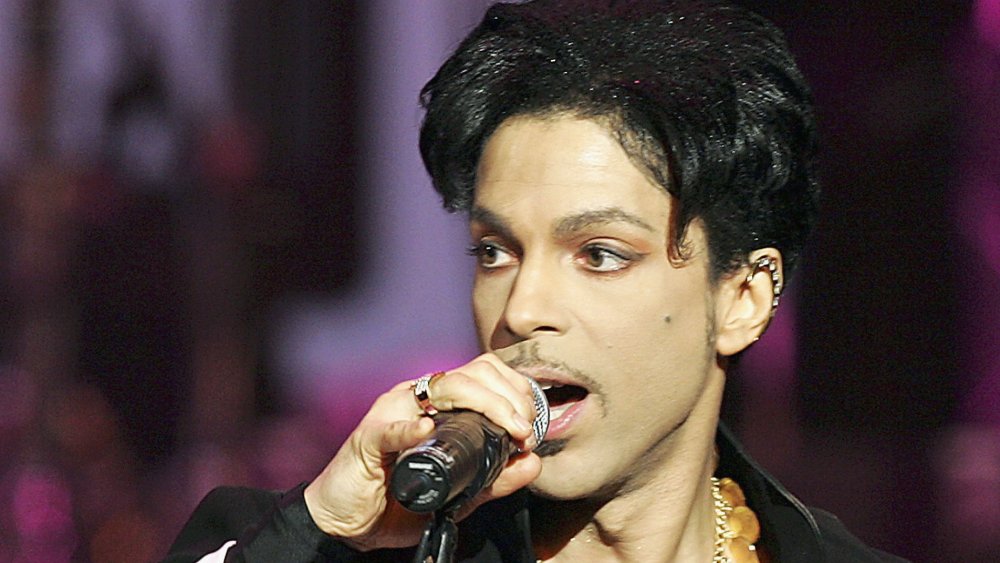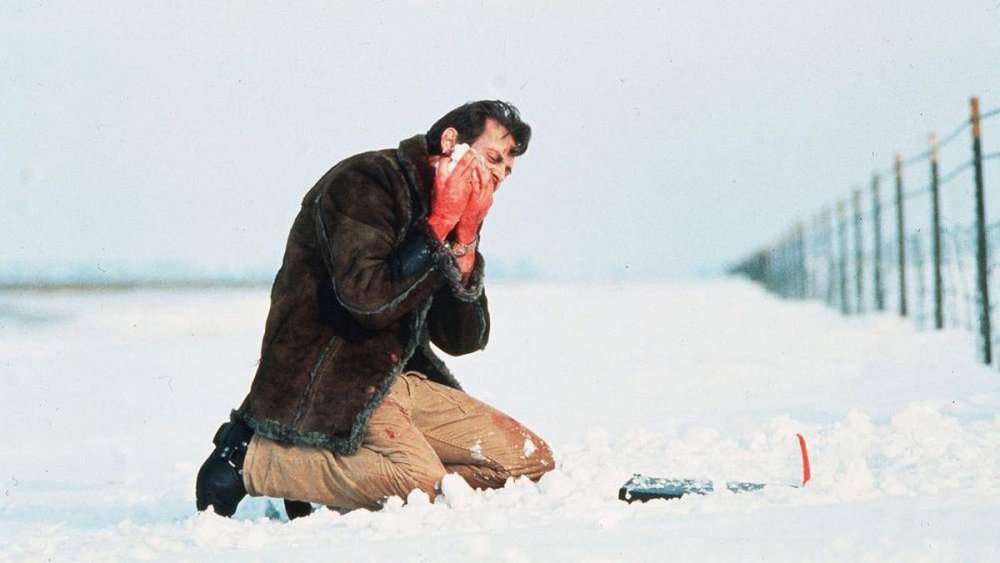The Untold Truth Of Fargo
No one knew quite what to make of Fargo when it was released in 1996. The Coen brothers created a crime thriller that often hardly feels like it, no matter how dark things get. The story that unfolds gives us desperate men going to grisly lengths in a world filled with so many friendly smiles and "Minnesota nice" accents that it can feel like a cartoon. In pursuit of the villains is Sheriff Marge Gunderson (Frances McDormand) — one of the Coens' only bona fide crime-fighting heroes, and she's pregnant.
Whether they knew what to make of it or not, audiences and critics fell in love with Fargo. The film was nominated for seven Oscars and won two — McDormand for Best Actress and the Coen brothers for Best Original Screenplay. It remains one of the Coens' most beloved works, eventually inspiring the anthology crime drama of the same name, which premiered in 2014.
But a film as singular as Fargo isn't made without spawning its own unique stories. Whether they're about the production of the film or the intense and sometimes bizarre audience responses, some of the tales surrounding Fargo are strange enough to warrant their own movies. If you're curious about what we mean, keep reading for the untold truth of Fargo.
The 'real' story of Fargo changes a lot
Understandably, you may assume that if a film announces that it's based on a true story, then there must be some kind of rule or law that means they can't be lying. However, you'd be wrong. In the beginning of Fargo, the audience is presented with the prompt that what follows is based on actual events that took place in 1987, and that while the names have been changed, the events are depicted accurately.
But in 2015, Joel Coen said (via The New York Times) nothing in that opening prompt was true. That year marked the death of T. Eugene Thompson, a man convicted of hiring someone to murder his wife in 1963 in St. Paul, Minnesota. It was one of the stories some Minnesotans believed might be the inspiration for Fargo, but when asked about a possible connection, Joel Coen said, "[Fargo is] completely made up. Or, as we like to say, the only thing true about it is that it's a story." He also said that, although the aforementioned murder took place not far from his hometown of St. Louis Park, he'd never heard of Thompson.
But the Coens' story about, well, about the story has changed over the years. At one point, Joel Coen said the film was based on an actual event, but that the film wasn't as accurate as the opening prompt claims. At another time, he said the story was real but didn't take place in Minnesota. Perhaps it's best to accept that we'll never know for sure.
Fargo isn't about Fargo
Like many of the Coens' films, the environment of Fargo plays a central role in the story — not just the Minnesotan culture, but the deep layers of snow almost everything is buried under. It's ironic then that a film in which the sense of place is so important is named after a place ... but not the place in which most of the story occurs.
Most of Fargo doesn't actually occur in Fargo. In the beginning of the film, Jerry Lundegaard (William H. Macy) drives to Fargo, North Dakota, to bring a Ford Cierra to the men he's hiring to kidnap his wife. Once he hands over the keys to Carl (Steve Buscemi), we cut back to Minneapolis, and it's the last we see of Fargo. Most of the rest of the story takes place in or around Brainerd, Minnesota.
The Coen brothers have said there's no great mystery behind the title, and that they just liked the sound of it. Admittedly, Fargo slips off the tongue more easily than Brainerd. But writing about the film for The Atlantic, film critic Christopher Orr speculated the title could be "a tongue-in-cheek play" on the 1974 classic Chinatown, in which the actual Chinatown only appears in the final few minutes.
The revenge of the state trooper
One of the most memorable scenes in Fargo is when everything goes sideways. After Carl and Gaear (Peter Stormare) are pulled over by a state trooper — with the captive Jean Lundegaard (Kristin Rudrüd) whimpering under a blanket in the back seat — Gaear shoots the trooper in the head and kills him. The killer is then forced to chase down and shoot a couple who drive by at the wrong time, as Carl is dragging the trooper's corpse off the road.
According to Stormare, life imitated art in a bizarre way, though thankfully the similarity didn't go too far. Speaking to HuffPost in 2015, Stormare said that shortly after the infamous scene was shot, he and Buscemi were pulled over by an actual police officer, and both actors assumed their Fargo roles. Buscemi had made an illegal U-turn, and as he tried to explain everything to the officer, Stormare was wordless in the passenger seat, just like in the Fargo scene. Stormare said, "Thank God we didn't have a prop gun in the glove compartment!"
Stormare remembered staying in the car for a while after being pulled over, "unable to move on from how bizarre the episode had been." Both actors suspected the Coens set it up somehow as a prank, but the brothers claimed to not know anything about it. The event left such a mark on Stormare that he told HuffPost, "Today, I'm not sure if it was all an illusion or if it happened for real."
Buscemi's character in Fargo paved the way for Donnie's abuse in The Big Lebowski
Steve Buscemi's been in a lot of the Coen brothers' films, including in the first one to follow Fargo – the 1998 cult classic The Big Lebowski. Buscemi's role isn't quite as central in the latter film. In The Big Lebowski, he plays Donny, the third member of the bowling team that includes the Dude (Jeff Bridges) and loudmouth Walter (John Goodman). Donny never really knows what's going on and is constantly being shouted down by Walter, who's repeated exclamations of "shut the f*** up, Donny" are so popular that they've been transformed into political memes.
As Christopher Orr points out in The Atlantic, the Coens put a lot of inside jokes in their films that relate to one another, and Walter's constant shouting down of Donny is one of them. In Fargo, Buscemi's character is a chatterbox, whether he's trying and failing to engage Gaear in conversation or dressing down a parking lot attendant. Walter's verbal abuse of Donny in The Big Lebowski is a response to Buscemi's character in Fargo never knowing when to shut up.
Ironically, Peter Stormare said in spite of their dynamic on the screen, he and Buscemi were the exact opposite once the cameras were turned off. While he describes himself as a big talker, Stormare told HuffPost that "in between takes [Buscemi] becomes like a clam. It's hard to get a word out of him."
Fargo revived Harve Presnell's career
In a film full of entertaining characters, one of the most fun is Wade Gustafson — father of Jean Lundegaard and a man who clearly has a low opinion of his son-in-law, even without knowing it's Jerry who arranged to have Jean kidnapped. Gustafson is played by Harve Presnell, an unfamiliar face to a lot of moviegoers before Fargo and an actor whose schedule filled up pretty quick after the movie hit theaters.
While a lot of viewers may not have recognized Presnell, the actor made a name for himself decades earlier. Presnell's screen-acting career began in the '50s, and in 1964, he made a big splash as a lead of the 1964 musical The Unsinkable Molly Brown, for which he won a Golden Globe Award for Most Promising Newcomer. The splash apparently wasn't big enough to sustain a film career, and the bulk of his subsequent work came in the form of smaller TV roles until Fargo.
After Fargo, Presnell's star rose once more. The actor landed roles in popular films like the 1997 action film Face/Off, the 1998 war epic Saving Private Ryan, and the 2003 comedy Old School. He worked regularly up until his death in 2009 from pancreatic cancer. He was 75 years old.
To any Coen fan, one Fargo scene is familiar
One of Fargo's most memorable scenes contains a callback to a scene from an earlier Coen movie. Visually, it's so similar that you could practically call it a remake.
The Coens' first major motion picture was the 1984 thriller Blood Simple. About halfway through the film, Ray (John Getz) murders his lover's husband, Marty (Dan Hedaya). He's about the finish Marty off with a shovel by the side of a quiet country road when he sees headlights approaching. Instead of hitting him with the shovel, he lifts the dying Marty and drags him to his car, desperately trying to do it before the coming truck drives by. He just barely manages to get to the car, shove Marty in, and flatten himself against the vehicle as the truck passes.
If you've seen the scene, it's impossible not to think of it while watching Fargo when Carl struggles to lift the murdered state trooper off the road. As soon as Carl sees the headlights approaching, it's like deja vu. Of course, Carl is nowhere near as successful as Ray is in the earlier film, forcing Gaear to chase the drive-by witnesses and eliminate them.
One of the Fargo production's biggest problems was a lack of snow
The snow of Fargo is practically a character all on its own. The killer Gaear seems to see the frozen landscape as a prison he can never escape. Even when he tries to watch TV, the "snow" of the static distorts the picture. But to the always optimistic Marge Gunderson — who looks out on the endless fields of snow outside her cruiser toward the end of the film and remarks how it's "a beautiful day" — it's just one more gift of the natural world.
In other words, there's a whole lot of snow in this film. And since Minnesota is known for its long and brutal winters, it's likely the Coen brothers didn't foresee much of a problem in choosing to film in Minnesota, beyond the obvious complications that might arise trying to transport people and equipment back and forth through the snow. They were in for a surprise.
Fargo was filmed in the winter of 1995, which wound up being the second-warmest Minnesota winter on record. The cast and crew of Fargo found themselves facing the exact opposite problems they would normally have to deal with, discovering the sites originally chosen for certain icy scenes didn't have enough snow. Shooting moved to northern Minnesota and North Dakota, where lack of snowfall wasn't a "problem."
Bruce Campbell has an interesting Fargo cameo
If you're familiar with the Spider-Man film trilogy directed by Sam Raimi, you may recall the actor Bruce Campbell — who's worked with Raimi since the '70s, most notably on the Evil Dead films — makes cameos as different characters in all three movies. While Fargo obviously wasn't directed by Raimi and has nothing to do with Peter Parker or any other Marvel heroes, Campbell does manage to make one of his most interesting cameos yet in the film.
Campbell shows up toward the end of the story, just before Gaear murders Carl with an axe. Before Carl returns to the cabin — shot in the face and with what he says is half the money, even though we know he's hidden more — Gaear is eating in front of the TV, watching a program through the static and appearing shocked when a character on the show announces that she's pregnant. The soap Gaear is watching is called Generations – a Detroit-area soap from the early '80s — and Campbell is the man being surprised with the news of his spurned lover's pregnancy.
The cameo, in fact, wasn't an accident. According to The Atlantic, Campbell said he wanted to be in Fargo and reached out to the Coens about appearing. "That was the only role available," Campbell said, "for me to donate some bad footage, so I was happy to do it."
Before FX's Fargo series, Tony Soprano's wife was almost Marge Gunderson
In 1997, 17 years before the acclaimed Fargo TV series aired, there was an early stab at turning the success of the film into success on television. Edie Falco starred as Sheriff Marge Gunderson in a pilot for Fargo, set in the same snowswept Brainerd of the film.
Bruce Bohne — who plays Deputy Lou in the film — was the only actor from the movie to reprise his role in the pilot, which was directed by the Oscar-winning actress Kathy Bates. General audiences didn't get a chance to see the pilot until 2003 when it aired on Trio, a now-shuttered network that showed the Fargo pilot as part of what it called its "Brilliant but Cancelled" programming. The pilot has Marge, still pregnant, investigating the murder of a pharmacist who was shot and killed while trying to get his stalled car running.
Two years after the pilot failed to get picked up, Falco filmed another pilot, this time in what would prove to be her most iconic role, as mob wife Carmela Soprano on HBO's The Sopranos. It's interesting and, honestly, a little scary to consider how the landscape of TV could've looked in the late '90s and early aughts if things worked out differently for the Fargo pilot.
The cameo almost known as Prince
Some fans believe the late music legend Prince makes a cameo in Fargo and for good reason. The symbol the artist used to identify himself during an uphill legal battle with Warner Bros shows up in the end credits of Fargo, listing him as "Victim in Field." In spite of the credit, the actual person playing the victim was Fargo's storyboard artist J. Todd Anderson, but apparently, Prince was close to actually getting a role in the movie.
Peter Stormare said that Prince, a Minnesota native, was friends with the Coens, and he spoke with the filmmaking duo about appearing in Fargo. He didn't say who approached who, but apparently, it just wasn't meant to be. Stormare recalled to HuffPost that, "[Prince] wanted to do a smaller part — I was told — but it didn't work out." The actor went on to say that "just having his symbol there helped his image a little in his long battle getting out from a stupid record contract."
Many believed a tragic story was connected to Fargo's missing money
Because of the Coens' fake-out in the opening of Fargo – that what was to follow was a true story — some people believed Steve Buscemi's character had actually left buried treasure out in the snow. Shortly before he's murdered by his partner, Carl buries close to $1 million, marking the spot with an ice scraper. By the end of the film, the money isn't recovered, apparently leading some treasure hunters to believe it was still out there.
In 2001, when the 28-year-old Takako Konishi was found frozen to death in Detroit Lakes, Minnesota, many believed the Japanese woman died trying to find the money. The story helped inspire the 2014 drama Kumiko, the Treasure Hunter. But just as Fargo itself was more fictional than audiences thought, so was the urban legend surrounding Takako Konishi's death.
According to The Guardian, when documentarian Paul Berczeller traveled to North Dakota to tell Konishi's story in This Is a True Story, he discovered the tale he'd gone there to film was wrong. The same day Konishi set out for her last journey into the woods, she mailed a suicide note to her parents in Japan. While it isn't definite what brought her to such desperate straits, Berczeller's investigation uncovered an affair between Konishi and a married American businessman, with whom she'd possibly traveled to Minnesota three times before. Berczeller's own conclusion was that Konishi didn't die looking for the riches of Fargo, but that she "probably died of a broken heart."
If you or anyone you know is having suicidal thoughts, please call the National Suicide Prevention Lifeline at 1-800-273-TALK (8255).
